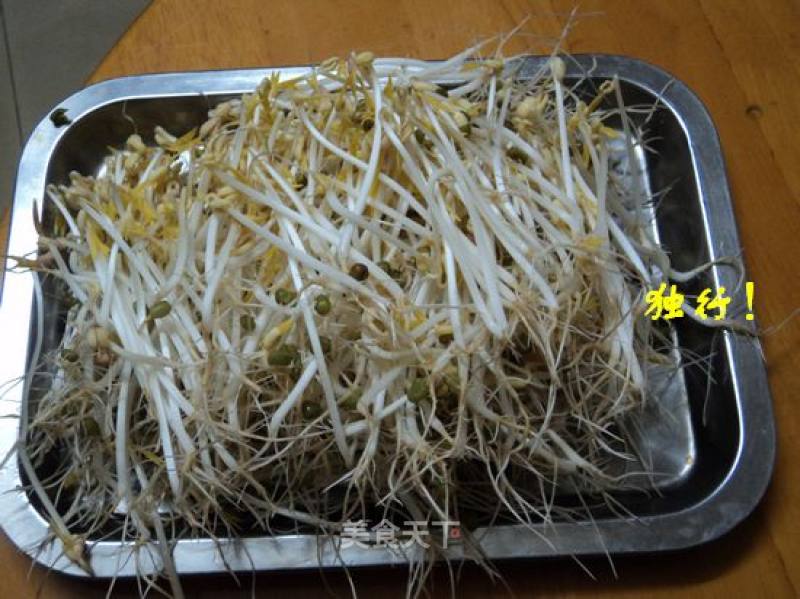1. Ming mung bean is a mung bean with slightly smaller grains and shiny skin, and its germination rate is extremely high.
2. Find a pot of suitable size at home, and everyone finds a suitable pot according to their own situation
3. Put a sieve smaller than the basin into the basin. It is best to have a certain gap between the bottom of the basin and the sieve. If the basin is too large, use two chopsticks to set up the sieve.
4. Add clear water to the basin and sprinkle the mung beans. At this time, the water surface is level with the mung beans, so that the mung beans can absorb water and germinate (this is 7:00 pm on the first day)
5. Mung beans have germinated after sucking water for one night (this is 8:00 in the morning of the next day)
6. Although the water surface drops after the mung bean absorbs water, the germinated seeds grow roots and extend out of the sieve to absorb water. This will not soak the beans, nor do they need to be watered every day. (This is 7:00 am on the third day)
7. This is the appearance of mung bean sprouts on the third morning. At this time, most of the water in the pot has been absorbed, and the water is a bit yellow. Replace the water in the pot with clean water to let the bean sprouts continue to grow.
8. This is what the mung bean sprouts look like at 7:00 am on the fourth day.
9. The appearance of mung bean sprouts at 8:00 pm on the fourth day. At this time, the bean sprouts can be picked.
10. Since no additives are added, the bean sprouts that are self-made have roots.
Tips:1. When the bean sprouts are sprouts, it is best to densely supplement the mung bean with "one layer" at the bottom of the sieve.
3. The water in the basin should be changed once on the third day, or the water will stink.

